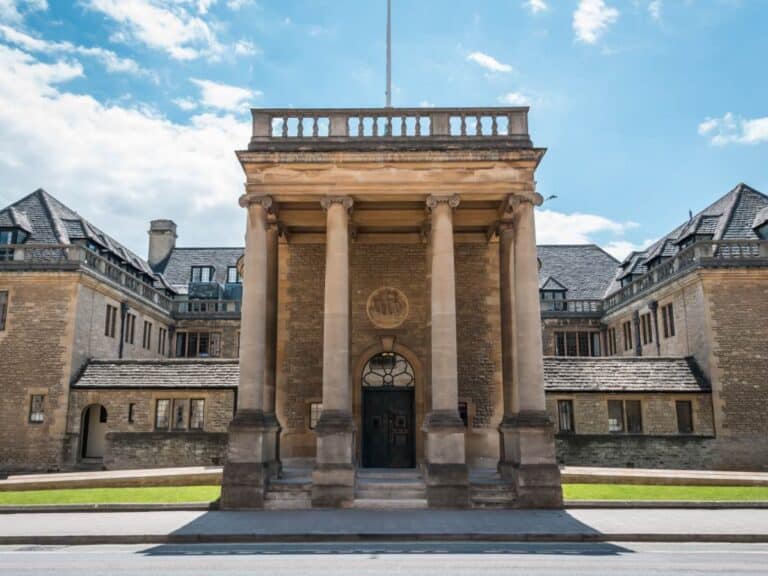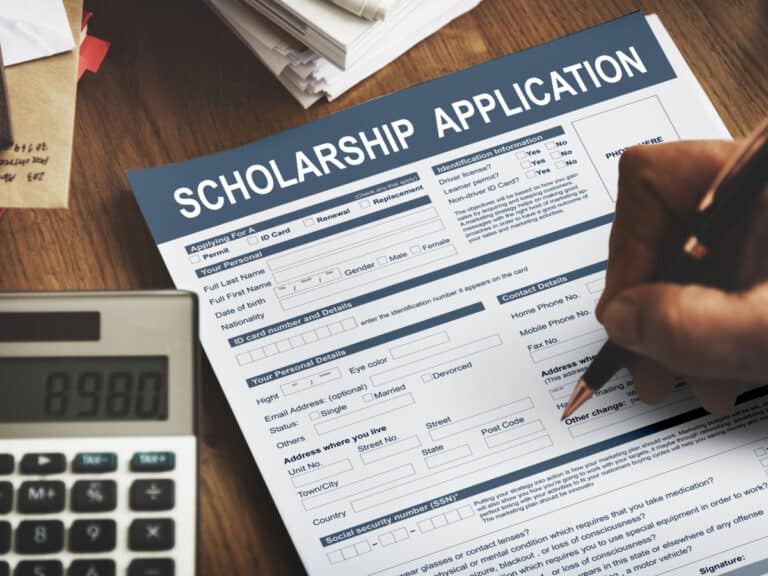What Does Bright Futures Cover?
There’s FAFSA, and then there’s FFAA — Florida Financial Aid Application. Filing the FFAA allows you to have access to the Florida Bright Futures Scholarship or simply Bright Futures. If you are a college-bound teener residing in Florida and planning on attending an in-state school, you may be wondering if you should apply for Bright Futures.
The Bright Futures program covers tuition and mandatory or applicable fees such as technology fee, transportation fee, health fee, athletic fee, service fee and financial aid fee. Some Bright Future scholarship levels may also award additional money that can be used to cover other college expenses.
Continue reading if you are interested in filling out the FFAA and applying for Bright Futures.
Just like when applying for any financial aid program, there are many things you need to know about Bright Futures, from the various program levels, eligibility requirements, application process to the college expenses covered. By the time you reach the end of this article, you will have a much better idea if you should leave your future to the program.
What are the Different Bright Futures Award Levels?
The Bright Futures scholarship program comes in three award levels: the Florida Academic Scholars award, Florida Medallion Scholars award, and Florida Gold Seal Vocational Scholars award. Each has its own eligibility criteria and provides a different amount of cash award and number of credit hours.
Students applying for the Bright Futures program may be eligible for a total of three different award levels, depending on the requirements they meet or the type of school they attend.
The Florida Academic Scholars (FAS) and Florida Medallion Scholars (FMS), for instance, are awarded to eligible students attending four-year institutions located in Florida. On the other hand, the Florida Gold Seal Vocational Scholars (FAS) awards are given to eligible students attending career, technical or vocational schools in the state.
Let’s get to know each Bright Futures award level more:
Florida Academic Scholars
Among the different Bright Futures award levels, FAS is considered the most competitive. It’s considered the most generous, too, allowing the awardees to receive funding for up to five years from the time they graduated from high school for not more than 120 credit hours toward the completion of the first bachelor’s degree.
120 credit hours — that’s how many credit hours a bachelor’s degree is! So, in other words, you might be able to attend college from start to finish without shelling out cash for tuition and fees.
FAS awardees receive an award equivalent to 100% of tuition costs and applicable fees. As mentioned earlier, applicable or mandatory fees covered range anywhere from technology fee to tuition differential fee. FAS awardees with the highest academic ranking in each county also get the Academic Top Scholars Award equivalent to $300.
What’s really nice about the $300 additional cash award, which, by the way, is awarded per term, is that you can use it to cover additional college expenses. They include books, supplies, lab equipment and even room and board.
However, as of this writing, it seems that the award is no longer available.
FAS award amounts to $212.28 per credit hour for awardees who are attending public in-state colleges and universities. Students who are attending private institutions, meanwhile, receive less than the stated award amount.
Florida Medallion Scholars
Compared to FAS, FMS is less competitive. But refrain from assuming that just about anyone with any high school GPA and SAT or ACT score can be eligible for it — despite not being as competitive as the Bright Futures award level we just talked about, FMS still has a relatively high minimum GPA and test score requirements.
Just like FAS, the recipients of FMS may receive funding for up to five years from the time they finished high school for a maximum of 120 credit hours towards the completion of their initial bachelor’s degree.
However, instead of covering 100% of tuition costs and applicable fees, FMS covers only 75% of those.
Technology fee, capital improvement fee, tuition differential fee, transportation or campus access fee, health fee, athletic fee, service fee, financial aid fee — these are the kinds of fees FMS takes care of, although it may also cover some other fees that an institution in Florida may require its students to pay.
Unlike FAS awardees, recipients of FMS do not get the $300 Academic Top Scholars Award, which can be used to pay for various expenses associated with college attendance.
FAS award is equivalent to $159.21 per credit hour for those who are going to a public school.
Gold Seal Vocational Scholars
Among all award levels available, it’s the GSV that’s considered the least competitive. What’s more, it’s also the Bright Futures program award that provides the least funding.
As the name suggests, GSV is for students who are attending in-state career, technical or vocational schools.
The amount of cash award that GSV recipients get will depend on the program they are working on as well as the number of credit hours they are taking. Awardees receive scholarship funding for up to either 72 credit hours (technical degree program or career certificate program) or 60 credit hours (applied technology degree program).
Here’s the amount of GSV award per credit hour according to the educational program:
| PROGRAM TYPE | AWARD |
| Career certificate | $39 |
| Applied technology degree | $39 |
| Technical degree | $48 |
Who is Eligible for Bright Futures?
Different Bright Futures award levels have different eligibility requirements. However, they share some requirements. They include being a resident of the state of Florida, having a diploma from a Florida high school or an equivalent, and enrolling at an in-state school for at least six credit hours.
Not every college-bound high schooler who needs aid may apply for a Bright Futures program.
Being a scholarship program based in Florida, it’s obvious that only residents of the Sunshine State can apply for and become qualified for it. So, in other words, if you are residing elsewhere in the country, applying for Bright Futures is futile — your application will not be considered even if you meet other eligibility requirements.
However, due to special circumstances, some students living outside Florida may still actually qualify for the program. We will discuss this matter in a few — so don’t stop reading now!
But just because you are residing in Florida doesn’t mean right away you are eligible for Bright Futures. There is one more very important requirement that Florida residents need to meet: attending an in-state institution. The good news is that students attending public and private schools in the state of Florida may apply.
Like other financial aid programs, there are many eligibility requirements to meet before one can qualify for a Bright Futures program in order to make sure that the funding will only go to the most deserving students.
If you are interested in applying for Bright Futures, here’s the complete list of eligibility requirements:
- Be a Florida resident and a US citizen.
- Have a diploma from a high school in Florida or an equivalent, like the GED.
- Enroll in a certificate or degree program at an eligible in-state institution.
- Complete the FFAA by August 31 of the year of high school graduation.
- Not have been convicted of a felony.
As mentioned earlier, different Bright Futures award levels have their own specific eligibility requirements. The following are the ones to meet for each one if you want to qualify for it:
FAS
- Minimum weighted high school GPA of 3.50.
- Minimum SAT score of 1330 or minimum ACT score of 29.
- Minimum of 100 hours of community service.
FMS
- Minimum weighted high school GPA of 3.0.
- Minimum SAT score of 1210 or minimum ACT score of 25.
- Minimum of 75 hours of community service.
GSV
- Minimum weighted high school GPA of 3.0 in non-elective courses.
- Minimum unweighted high school GPA of 3.50 in career education courses.
- At least 3 full credits in a single Career and Technical Education program.
Besides the ones mentioned above, those who wish to apply for Bright Futures’ Gold Seal Vocational Scholars program must also meet the minimum SAT, ACT or PERT score requirements:
SAT
- Reading: 19
- English: 17
- Mathematics: 19
ACT
- Reading: 24
- Writing and Language: 25
- Mathematics: 24
PERT
- Reading: 106
- Writing: 103
- Mathematics: 114
No matter the Bright Futures award level, there is a minimum test score requirement to meet. However, some applicants may still qualify without the need to have a certain SAT, ACT or PERT score, although they must have won awards from national competitions such as the National Merit Finalist and Scholars and National Hispanic Scholars.
Having an Advanced International Certificate of Education or an International Baccalaureate Diploma may keep aspirants from having to have the minimum test score requirement in order to win a Bright Futures award.
Can You Renew the Bright Futures Scholarship Program?
Like most scholarship programs, Bright Futures is renewable. As a matter of fact, awardees are automatically evaluated for renewal whether or not they send a renewal application. However, like when applying for the program for the first time, there are eligibility requirements for Bright Futures’ renewal.
Some scholarships are non-renewable — they are awarded for one academic year only. After that, you will have to apply for another program that can be used to cover some of the costs of college or simply make do with your current renewable scholarships provided that you are able to meet the criteria each year.
The Bright Futures scholarship program is renewable, which means that you will be awarded the scholarship for every year of college for as long as you meet the rules of Bright Futures.
If you receive funding from Bright Futures during the current academic year, you can be sure that you will be automatically evaluated for renewal at the end of the term — this is true even if you forget to submit a renewal application. The college or university you are attending will submit your GPA and credit hours to the Bright Futures’ office.
Here are the minimum renewal cumulative GPA requirements for each Bright Futures award level:
- FAS: 3.0
- FMS: 2.75
- GSV: 2.75
Failure to meet the minimum renewal cumulative GPA requirements as well as the annual credit hours earned, needless to say, will keep you from having the opportunity to have the award restored.
But just because you failed to meet the requirements to be eligible for renewal of the Bright Futures scholarship program at the end of your first year of college doesn’t mean right away that it’s the end of the world. That’s because there is what’s referred to as a restoration, which allows you to request to restore the scholarship you lost.
What you need to do in this situation is log into your online Office of Student Financial Assistance account and then fill out the Reinstatement/Restoration Application.
Besides completing the Reinstatement/Restoration Application, there are also certain things that you will have to do in order to satisfy the requirements for the restoration of the Bright Futures scholarship program. A couple of options are available for you to choose from:
- Raise your cumulative GPA above the renewal requirement for the Bright Futures scholarship program before the term for which you are seeking funding.
- Take summer classes that the college or university you are attending will apply towards your cumulative GPA based on its policies, and then request the financial aid office to submit an update of your summer grade as well as credit hours to the office of the Bright Futures.
Other than the steps mentioned above, there is one more very important thing you must know: restoration of your Bright Futures funding is a one-time opportunity only.
Needless to say, if you fail to apply for a restoration of your scholarship and meet the requirements, too, you will no longer be eligible to receive the Bright Futures scholarship after your first year of college. In order to avoid running the risk of losing your funding, make sure that you keep your grades high and earn the required number of credits.
Are Non-Traditional Students Eligible for Bright Futures?
Non-traditional students are eligible for the Bright Futures program, too. As a matter of fact, they are encouraged to apply just like traditional Florida students. Non-traditional students that qualify for it include homeschooled ones and those living outside Florida due to special circumstances.
Earning a diploma or degree doesn’t necessarily mean spending most of your waking hours on the campus — you can be a high school diploma or college degree holder in ways apart from what’s considered the norm or standard.
If you are a non-traditional student who is a Florida resident, you may also apply for Bright Futures. Since it’s not the need-based type of scholarship, if you qualify, you will receive an award from the program whether or not you can fully pay expenses associated with attending a certificate- or degree-granting school.
The following are examples of non-traditional students that may apply for Bright Futures:
GED certificate holders
Many colleges and universities accept not only students with a high school diploma but also those with an equivalent, such as the GED. If you have a GED certificate and would like to attend a two-year or four-year institution or a vocational or technical school in Florida, you may apply for Bright Futures.
Homeschooled students
Home education students are eligible for the Bright Futures program, too, provided that they are registered with the county for both their 11th- and 12th-grade years as well as meet the general eligibility requirements, except the prerequisite to earn a high school diploma.
Mid-year graduates
Simply put, mid-year graduates are students who graduate between September 1 and January 1 and seek funding for the term following graduation. Like May or June graduates, mid-year graduates who wish to apply for Bright Futures should meet the requirements and submit the necessary forms and documents.
Out-of-state students
Believe it or not, you can still be eligible for the Bright Futures program if you are currently living outside Florida. Special circumstances such as the need to fulfill military or religious requirements allow you to qualify provided that you have a high school diploma from an institution in Florida.
Online students
Many online colleges and universities in Florida state that their students are eligible for consideration for federal, state and institutional aid, including the Bright Futures program. However, it goes without saying that only Florida residents attending these online colleges are eligible to apply for the scholarship.
Just Before You Apply for Bright Futures
The Bright Futures scholarship program takes care of tuition costs and mandatory or applicable fees, thus making the pursuit of a certificate or degree easier on the pocket. And because it’s not need-based like other scholarships, students can apply no matter the income level of their families.
Completing the FFAA is the first step to take if you want to be considered for Bright Futures.
However, unlike filling out the FAFSA that allows you to receive federal aid no matter where you are in the country should you qualify, you have to be a resident of the state of Florida in order to be eligible for a Bright Futures program. It’s also necessary that you are accepted into or attending an in-state institution, whether public or private.
Disclaimer: The views and opinions expressed in this article are those of the authors and do not necessarily represent those of the College Reality Check.





